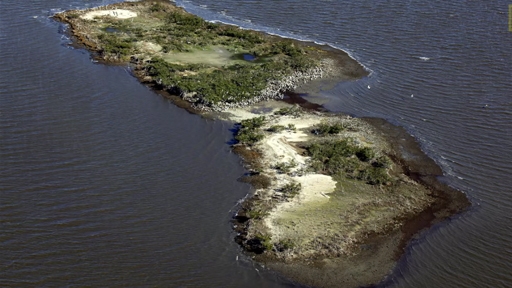Hello everyone!
In my last post, I went through a brief summary of the various effects of oil spills on animals. Recently, as I was researching more about the BP oil spill, I came across this tragic incident which I would like to share with everyone.
Would you believe me if I told you that the BP oil spill actually disintegrated an island? I know it sounds pretty unbelievable but well, this article written by photographer Tyrone Turner would illustrate to you what happened. I would also like to recommend that you watch this video by National Geographic on the Cat Island.
Cat Island was one of the 4 largest bird-nesting grounds in Louisiana for Brown Pelican, Snowy Egrets, Roseate Spoonbill, and a variety of other shorebirds.
This is an aerial view of the island in Jan 2012 less than 2 years after the incident.
The view of Cat Island in July 2014
This was an important nesting ground especially for Brown pelicans, Louisiana’s state bird, that vanished half-century ago due to the pesticide DDT but managed to make a comeback after it was banned in 1972 (Welch, 2015). Many pelicans nested on these barrier islands that were smothered by Deepwater Horizon oil. Prior to the oil spill, this was a pristine island with around 2.5m of mangroves and was roughly the size of 4.5 football fields.
Oil booms were placed around the islands and along the shorelines but it did little to stop the oil. Instead, they ended up tangling in the vegetation they were meant to protect (Turner, 2020). When the oil came in, it killed the mangroves and marsh grasses. Which then killed the root systems that were holding the island together. Without the root system, the whole island started eroding away with the water. Worse still, the oil reached the islands during the nesting season for the pelicans and other migratory birds causing more fatalities. 
From this image captured by Turner, you can see the ridges covered in oil which killed the grass looking “burned” and the exposed mud makes it vulnerable to erosion.
The Louisiana Department of Wildlife and Fisheries study shows that chicks when born are imprinted on these islands. So they will return every year to the same place they were born to breed and nest again. When they come back and the island is gone, they do not simply just move elsewhere to breed they just do not breed. As such, generations of birds are being lost and what could the impact be on long-term stability of these birds worse still the rare and endangered birds that were nesting here.
Though Cat Island is now underwater and the state has pulled the plug on the funding, PJ Hahn, former director of Coastal Zone Management for Plaquemines Parish, is not giving up. He believes that a project making use of dredge material from the Mississippi River is possible (Turner, 2020). There is currently only 6 bird islands left in Louisiana and they all face the same problem. They are disappearing. More effort needs to be put in to maintain and build new islands if not we are going to lose these birds and it is only a matter of time.
That brings me to the end of this post
See you guys soon!
References
Turner, T. (2020, April 20). ‘Where The Land Used To Be,’ Photos Show Louisiana Coast 10 Years After BP Oil Spill. Retrieved November 08, 2020, from https://www.npr.org/sections/pictureshow/2020/04/20/835829123/where-the-land-used-to-be-photos-show-louisiana-coast-10-years-after-bp-oil-spil
Welch, C. (2015, April 14). Is Gulf Oil Spill’s Damage Over or Still Unfolding? Retrieved November 08, 2020, from https://www.nationalgeographic.com/news/2015/04/150414-deepwater-oil-spill-birds-gulf-macondo-louisiana/









